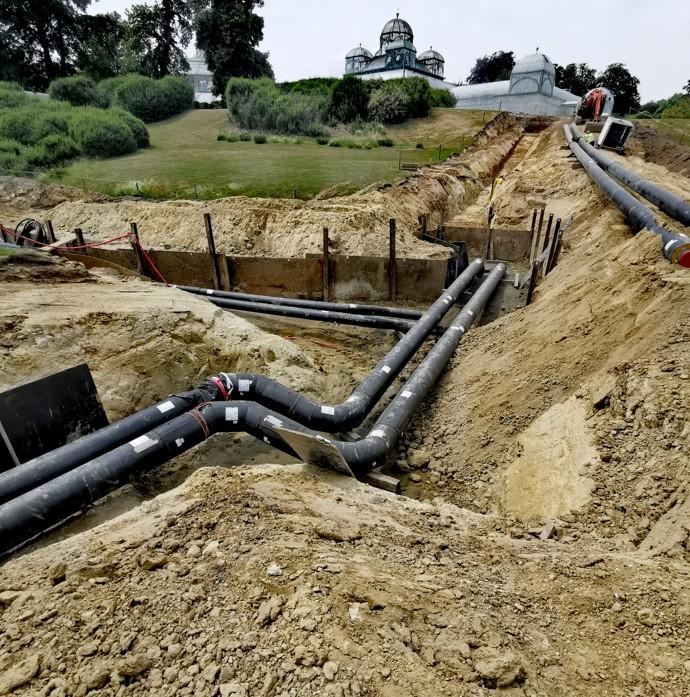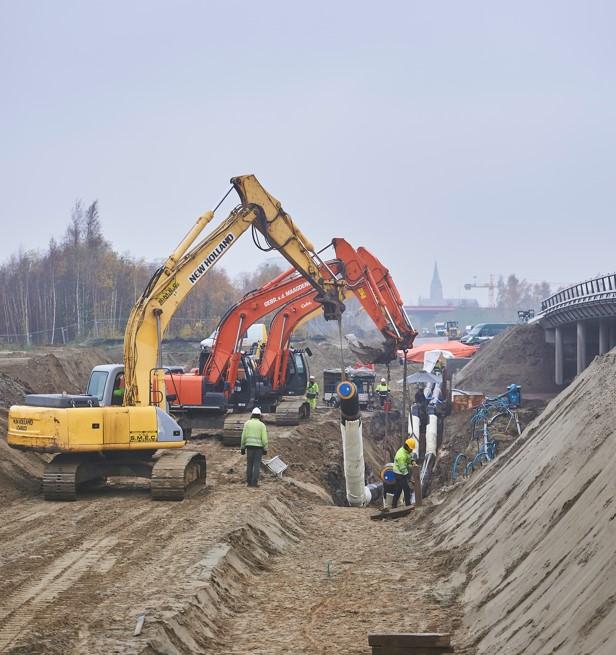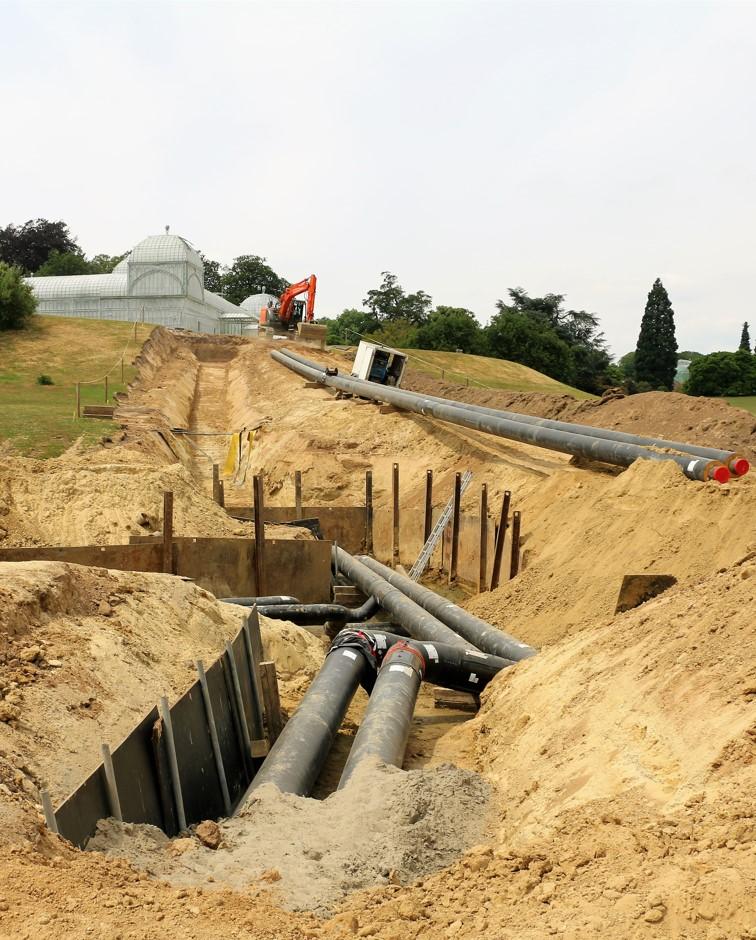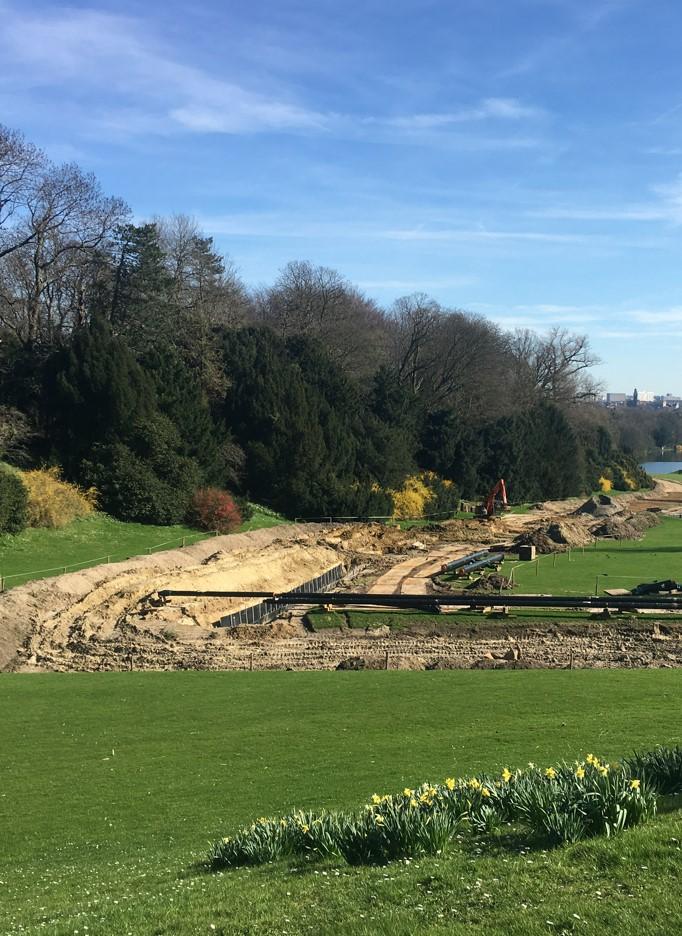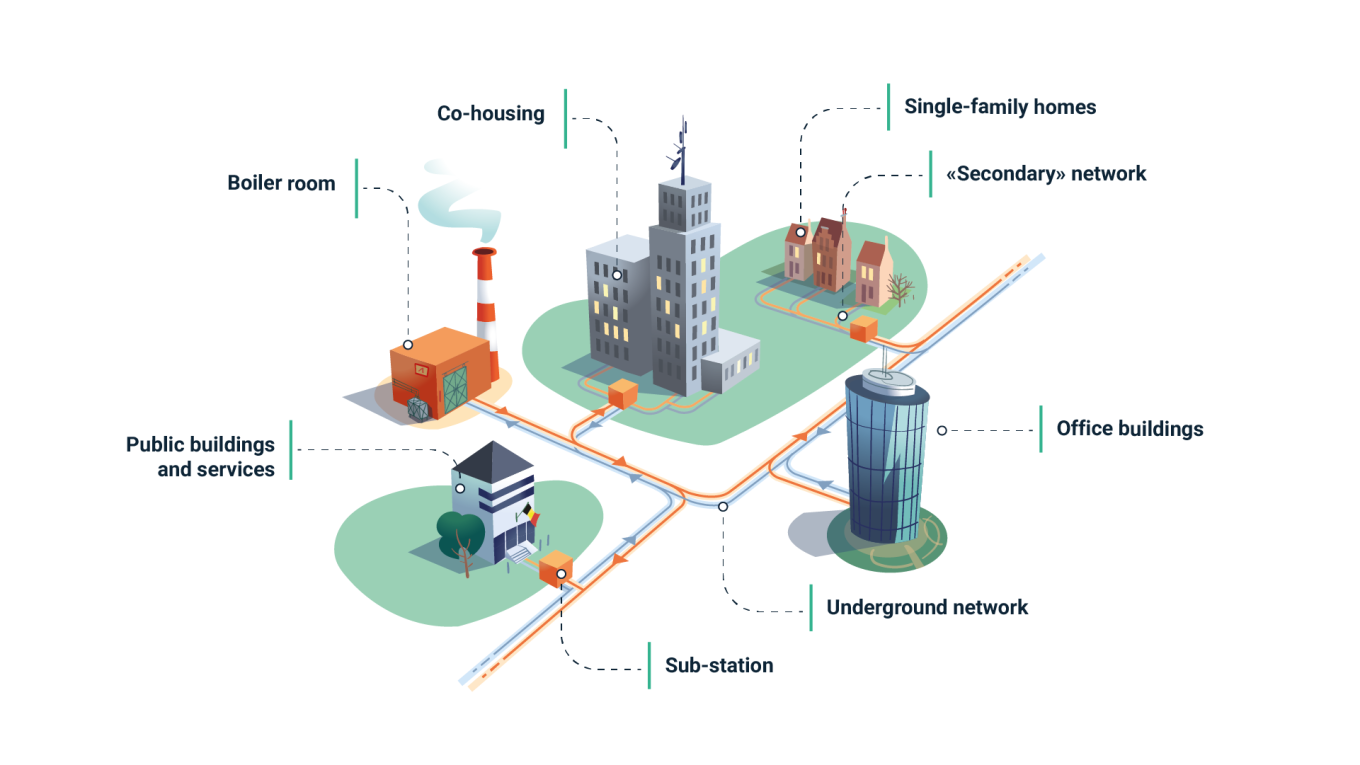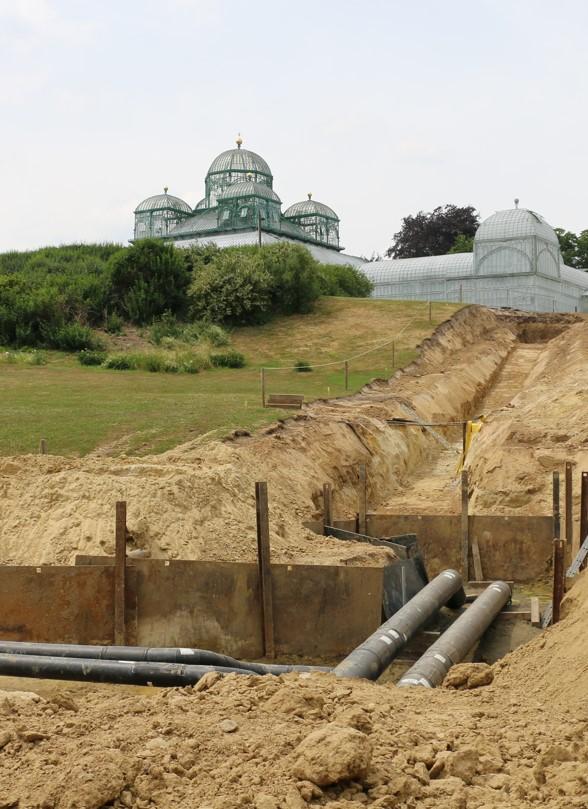Collective energy networks
How can we heat the infrastructures of tomorrow while reducing the impact on our environment? Among the solutions proposed by EQUANS, heating networks are coming to the forefront.
Simultaneously reliable, comfortable, economical and ecological, heating networks are a solution for the future for our industries, cities and territories. From installation to maintenance, EQUANS has a wide range of expertise and numerous references in the sector, whether for the development of a network for an economic business park, an eco-district, or for a shopping centre.
Solutions of the future for our industries, cities and territories
Powered by renewable or recovered energies, heating networks make it possible to limit the release into the atmosphere of hundreds of thousands of tonnes of CO2 each year.
EQUANS has great expertise in this type of installation and the synergies within the company allow us to offer a complete service, from installation to maintenance and operation, integrating all disciplines. We already operate more than 35 heating and/or cooling networks in the Benelux. Development of these collective energy systems is an essential tool in the energy transition.
A large central heating system on the scale of several buildings
The heating network functions like a large central heating system on the scale of several buildings, a district or even a city.
The various buildings are supplied with heat and/or cold via an underground network of pipes. Distributed in the form of hot water, the energy comes from one or more centralised boilers. These heat production units operate 24 hours a day and are operated industrially, aiming for maximum thermal efficiency.
The heat is transmitted to the radiators or underfloor heating system of each unit through a compact and quiet individual substation located between the common heating network and the heating circuit of the building. This substation also provides for the production of hot water.
From various renewable energy sources
In a heating network, heat is produced locally and can be produced from all existing energy sources:
✓ Cogenerated thermal energy
✓ Renewable energy: biomass, geothermal, solar, wood energy
✓ Waste heat recovery energy: incineration of household waste, biogas, wood waste
Geothermal energy can also be used to cool buildings passively. With this solution, the heat of the buildings is captured to recharge the ground via the heating network. This virtuous circle makes it possible to cool for free while guaranteeing the proper functioning of the geothermal system over the years.
Energy performance and cost control
The heating network is a sustainable solution for improving energy and environmental efficiency. It has many advantages:
✓ Reduction of CO2 emissions
✓ Cost optimisation
✓ Lower energy bills
✓ Pooling of needs
✓ Production of local heat from a renewable energy source
✓ Simplicity of operation
✓ Reliability of facilities
✓ User comfort and safety
The solution to supply your eco-districts
We speak of an eco-district when a district or a set of buildings are designed to be more sustainable than standard constructions.
Building an eco-district means promoting a new ecological urban plan, where better living together is combined with environmental issues and housing comfort.
A comfort that inevitably includes the heating facilities. Collective energy systems combine many advantages. Performance and profitability, safety, practicality, comfort, low greenhouse gas emissions, among others.
EQUANS supports you in the creation, development and financing of your future eco-district. Our know-how in terms of sustainable cities and energy transition, our cutting-edge expertise in the energy efficiency of buildings and the reduction of consumption, are all elements that have enabled us to develop innovative "as a service" solutions intended for eco-districts.
The heating network consists of different elements:
✓ The boiler room: one or more heat production units
✓ Transmission and distribution piping: the network of primary pipelines that transport heat to substations
✓ Exchange substations: installed inside the connected buildings
A network of "secondary" pipes which distribute heat in the form of hot water from the substations to the emitters ("terminal units") of the dwellings or offices.
Centralised cooling networks
The district cooling network is a centralised system that produces and distributes chilled water to supply an air conditioning circuit and thus cool a set of buildings. The network makes it possible to pool needs and thus avoid having to use individual air conditioning units, which are less ecological, more energy-consuming and more expensive.
The cooling network is a closed circuit and perfectly integrated into the urban environment. It captures heat from buildings using delivery stations. Then, a network of buried pipes transports it to a cooling plant that uses local energy sources.
Cold can also be produced from a system of refrigeration heat pumps and ice storage associated with an existing heating network: this innovative device makes it possible to simultaneously produce cold and heat.
The advantages of the centralised cooling network
✓ Reduced power consumption
✓ Lower CO2 emissions
✓ Improved energy efficiency
✓ Reduced water consumption

